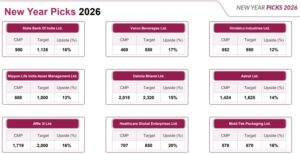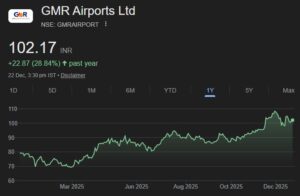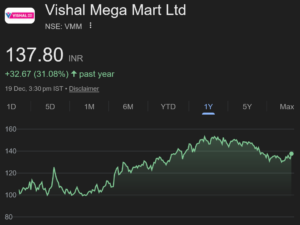

Megh Manseta’s profile in Outlook Business (The Reticent Investor) reveals interesting insights into his investment philosophy and technique.
First, we must take note of his investing track record because that will establish his credibility. In the period from 1991 to 2000, Manseta managed a CAGR of 30%. In the period from 2004 to the present, Manseta has achieved a CAGR of 25%.
Now, as any accomplished investor will tell you, this is an awesome record because if you can manage to compound your money at a CAGR of 25%, an investment of Rs. 1 lakh in 1991 becomes Rs. 1.69 crore in 2013. If you compound at 30%, your investment grows to a mind-blowing Rs. 4.17 crore. (Incidentally, if you compound at 40%, Rs. 1 lakh becomes Rs. 24 crore in 23 years! If you do ever manage to compound at 50% CAGR, your investment of Rs. 1 lakh becomes – hold your breath – Rs. 1010 crore in 23 years).
So, now that you know the magnitude of Megh Manseta’s achievement, let’s see how he did it.
Surprisingly, what the interview reveals is that Megh Manseta’s incredible success is simply the result of a common sense approach to investment and adopting strict discipline.
(i) Buy companies with a competitive edge and whose business you understand fully:
Megh Manseta’s portfolio has no “hidden gems”. Instead, they are stocks of well known companies that are leaders in their respective fields.
His portfolio comprises of Infosys, Gruh Finance, MICO (Bosch), Godrej Consumer, Hawkins Cookers, HUL, Nestle, Marico, Shriram Transport Finance and Gruh Finance.
Megh reveals that when he decides to invest in a stock, he goes by common sense. He read about Infosys in a magazine and was impressed by the quality and transparency of its management.
Similarly, when Megh Manseta invested in Gruh Finance it was just a fledgling. However, the management was so straight-forward and focused that Megh decided that one couldn’t go wrong with a company like that.
The same was the case with Bosch. Mansetta liked the fact that though Bosch was technologically miles ahead of their Indian counterparts, they were open and fair in their dealings.
The secret of Mansetta’s success is that he likes to understanding what makes a businesses succeed. He considers himself more of a business analyst than a stock market investor.
(ii) Adopt a “Buy and Hold” strategy to get the advantage of compounding:
Megh Manseta explains that he has held onto his favourite stocks for several decades now.
He points out that when you hold onto winning stocks, they compound at nearly 20 – 30% every year and that creates enormous wealth.
(iii) Take advantage of sharp corrections to buy large quantities:
In the great stock market crash of 2008, while the rest of the World was cowering in fright, Megh Mansetta was busy at work, deploying his surplus cash into stocks which were available at throwaway prices. One of the stocks that he bought was Hawkins Cookers, at the price of just Rs. 160.
(iv) Learn from mistakes:
Megh candidly admits that he made several mistakes in his investing career and lost a lot of money. However, there is no rancor in his voice when he recounts how he bought junk-yard stocks like Mangalam Timber, Voltamp, Jyoti Structures etc. Instead, he says the important lessons that he learnt from his mistakes are:
(a) Don’t buy only because a stock looks mathematically cheap. Instead, focus on cash flows, sustainability of profits and cyclicality;
(b) Buy quality stocks. Though you pay a higher price in the beginning, you will benefit in the long-run;
(c) Stick to your circle of competence. Never experiment with stocks whose business you don’t understand.
Manseta also cites an instance where he lost out on a super-duper multibagger because he was impatient. He bought GSK Consumer at around Rs 245 in 2004 and sold it in 2010 for Rs. 1500 because of its poor dividend outgo. Later, GSK paid out a special dividend and the parent announced a buyback at Rs 3,900 and the stock price surged to Rs. 6,000. Manseta says he should never have sold GSK because it had healthy operating margins, decent cash flow, good governance, and an enduring brand.
(d) Force youself to have only 20 stocks in the portfolio:
“If you force yourself to own only 20 names, you will be much more careful and thorough about each. This is a matter of temperament and discipline, not simply business judgment” Manseta says.
(e) Stay in the company of accomplished investors. Be humble and always keep learning:
The refreshing aspect about Megh Manseta is his humility and unquenchable desire to keep learning. He cultivates this humility by making it a point to go to the Berkeshire Hathway “pilgrimage” to meet Warren Buffett, Charlie Munger and other accomplished investors. “Berkshire is a way of life, a mindset that combines integrity, unrelenting hard work, humility and wisdom” Manseta says.






I HAVE READ WHAT YOU HAVE ACHIVED I AM VERY HAPPY TO KNOW HOW TO INVEST AND I WILL FOLLOW THE WAY YOU HAVE INVESTED IN STOCK.AND ONLY 20 STOCK OF GOOD COMPONY
THANKS
Did he receive poor or negative growth in between 2000 to 2004 ??? Why don’t he mention return from 1991 to the present ?
——–
In the period from 1991 to 2000, Manseta managed a CAGR of 30%. In the period from 2004 to the present, Manseta has achieved a CAGR of 25%.
Good Point. The original article is silent on this. I suppose he must have had average/ negative growth.
Arjun – Your articles are seriously worth reading. Kudos
Regardless of CAGR return, we can agree that Megh has outstanding list of portfolio.
He has Buffet like mindset. I knew recently that he got rare chance to meet Buffet after receiving letter from Buffet himself !
Portfolio will continue to fly high.
hats off megh bhai, no interview with this man? arjun why dont you arrange one?